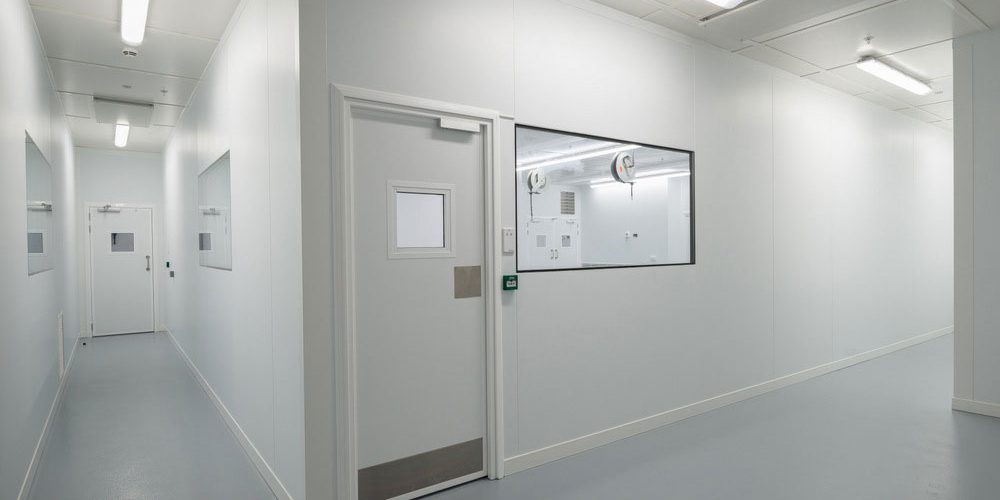Clean Room

A clean room is a controlled environment that maintains strict levels of cleanliness, particulate control, temperature, humidity, and other environmental parameters to minimize contamination and ensure the quality and integrity of products or processes. Clean rooms are widely used in industries such as pharmaceuticals, biotechnology, electronics manufacturing, aerospace, and healthcare where even minute particles or contaminants can have significant impacts on product quality, safety, or performance.
1. Environmental Control:
- Particulate Control: Clean rooms are designed to minimize airborne particles, dust, microbes, and other contaminants through specialized filtration systems, air handling units, and cleanroom design features such as smooth surfaces, sealed seams, and positive pressure.
- Temperature and Humidity Control: Clean rooms maintain precise temperature and humidity levels to create optimal conditions for manufacturing processes, equipment operation, and product stability. Tight environmental control helps prevent condensation, microbial growth, and thermal variations.
2. Classification and Standards:
- Cleanroom Classes: Clean rooms are classified based on the maximum allowable concentration of airborne particles per cubic meter of air, as specified by international standards such as ISO 14644-1 or Federal Standard 209E (obsolete). Common cleanroom classes include ISO Class 1 to ISO Class 9, with ISO Class 1 being the cleanest.
- Standards and Regulations: Clean rooms must comply with industry-specific standards, regulations, and guidelines to ensure cleanliness, quality, and safety. Regulatory bodies such as the Food and Drug Administration (FDA), European Medicines Agency (EMA), and International Electrotechnical Commission (IEC) may establish requirements for cleanroom design, operation, validation, and monitoring.
3. Design and Construction:
- Materials and Finishes: Clean rooms are constructed using non-shedding materials such as stainless steel, fiberglass-reinforced plastic (FRP), epoxy resin, or smooth, non-porous surfaces that are easy to clean and disinfect. Walls, floors, ceilings, and fixtures are finished to minimize particle generation and accumulation.
- Airflow and Ventilation: Clean rooms feature controlled airflow patterns, such as laminar flow or turbulent flow, to direct airborne particles away from critical areas or processes. High-efficiency particulate air (HEPA) or ultra-low penetration air (ULPA) filters remove contaminants from incoming air, while exhaust systems remove filtered air and contaminants from the cleanroom environment.
4. Equipment and Furnishings:
- Cleanroom Equipment: Clean rooms are equipped with specialized equipment and furnishings designed for cleanliness, compatibility, and ease of cleaning. This may include cleanroom-compatible furniture, equipment enclosures, pass-through chambers, gowning racks, and workstations.
- Controlled Access: Access to clean rooms is restricted and controlled to minimize contamination from personnel, equipment, or materials. Entry procedures may include gowning, hand hygiene, shoe covers, and cleanroom protocols to prevent outside contaminants from entering the cleanroom environment.
5. Monitoring and Maintenance:
- Environmental Monitoring: Clean rooms are continuously monitored for environmental parameters such as particle counts, temperature, humidity, air pressure differentials, and microbial levels. Monitoring systems provide real-time data for process control, trend analysis, and compliance verification.
- Cleaning and Disinfection: Regular cleaning and disinfection procedures are implemented to maintain cleanliness and sterility within clean rooms. Cleaning protocols may include wiping surfaces with disinfectants, vacuuming, mopping, and periodic decontamination of equipment and fixtures.
6. Personnel Training and Behavior:
- Gowning and Training: Personnel working in clean rooms undergo specific training on cleanroom protocols, gowning procedures, hygiene practices, and contamination control measures. Proper gowning attire, including coveralls, hairnets, gloves, and face masks, helps minimize particle shedding and microbial contamination.
- Behavioral Practices: Clean room personnel adhere to strict behavioral practices such as minimizing movement, avoiding unnecessary talking or activities, and maintaining a respectful distance from critical processes or equipment to reduce the risk of contamination.
